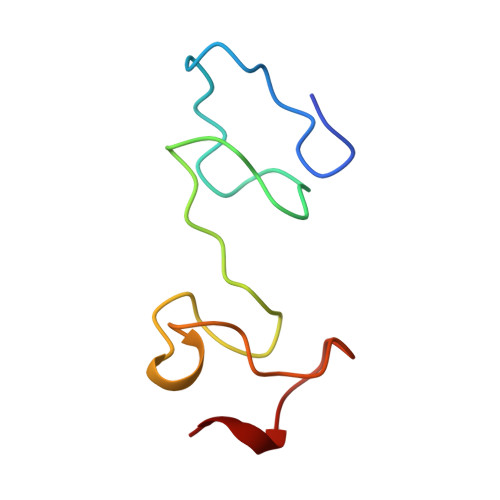Comparison of the NMR solution structure and the x-ray crystal structure of rat metallothionein-2.
Braun, W., Vasak, M., Robbins, A.H., Stout, C.D., Wagner, G., Kagi, J.H., Wuthrich, K.(1992) Proc Natl Acad Sci U S A 89: 10124-10128
- PubMed: 1438200
- DOI: https://doi.org/10.1073/pnas.89.21.10124
- Primary Citation of Related Structures:
4MT2 - PubMed Abstract:
Metallothioneins are small cysteine-rich proteins capable of binding heavy metal ions such as Zn2+ and Cd2+. They are ubiquitous tissue components in higher organisms, which tentatively have been attributed both unspecific protective functions against toxic metal ions and highly specific roles in fundamental zinc-regulated cellular processes. In this paper a detailed comparison of the NMR solution structure [Schultze, P., Wörgötter, E., Braun, W., Wagner, G., Vasák, M., Kägi, J. H. R. & Wüthrich, K. (1988) J. Mol. Biol. 203, 251-268] and a recent x-ray crystal structure [Robbins, A. H., McRee, D. E., Williamson, M., Collett, S. A., Xoung, N. H., Furey, W. F., Wang, B. C. & Stout, C. D. (1991) J. Mol. Biol. 221, 1269-1293] of rat metallothionein-2 shows that the metallothionein structures in crystals and in solution have identical molecular architectures. The structures obtained with both techniques now present a reliable basis for discussions on structure-function correlations in this class of metalloproteins.
- Institut für Molekularbiologie und Biophysik, Eidgenössische Technische Hochschule, Zürich, Switzerland.
Organizational Affiliation:



















